Netty核心组件
Netty中的Reactor模型主要由多路复用器(Acceptor)、事件分发器(Dispatcher)、事件处理器(Handler)组成,可以分为三种.
单线程模型:所有I/O操作都由一个线程完成,即多路复用、事件分发和处理都是在一个Reactor线程上完成的。
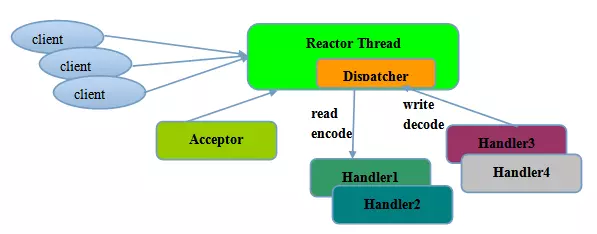
对于一些小容量应用场景,可以使用单线程模型。但是对于高负载、大并发的应用却不合适,主要原因如下:
- 一个线程同时处理成百上千的链路,性能上无法支撑,即便CPU负荷达到100%,也无法满足海量消息的编码、解码、读取和发送;
- 当负载过重后,处理速度将变慢,这会导致大量客户端连接超时,超时之后往往会进行重发,最终会导致大量消息积压和处理超时,成为系统的性能瓶颈;
- 一旦单线程意外跑飞,或者进入死循环,会导致整个系统通信模块不可用,不能接收和处理外部消息,造成节点故障,可靠性不高
2、多线程模型:Reactor线程模型

多线程模型的特点:
- 有专门一个Acceptor线程用于监听,接收客户端的TCP连接请求;
- 网络IO的读写操作由一个NIO线程池负责,线程池可以采用标准的JDK线程池实现,包含一个任务队列和N个可用的线程,由这些NIO线程负责消息的读取、解码、编码和发送;
- 一个NIO线程可以同时处理多条链路,但是一个链路只能对应一个NIO线程,防止发生并发操作问题。
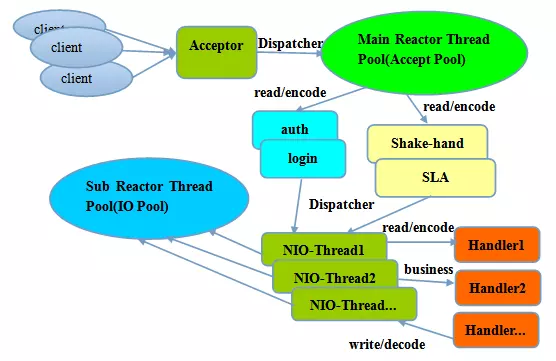
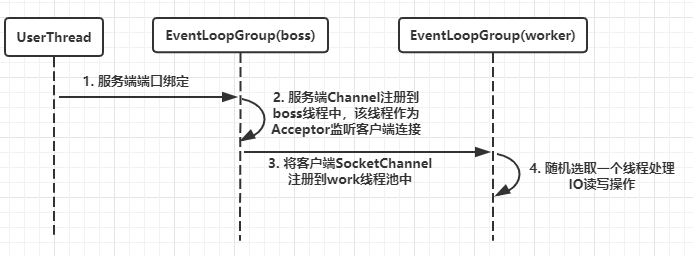
在Netty中,bossGroup线程池最终还是只会随机选择一个线程用于处理客户端连接,与此同时,NioServerSocetChannel绑定到bossGroup的线程中,NioSocketChannel绑定到workGroup的线程中
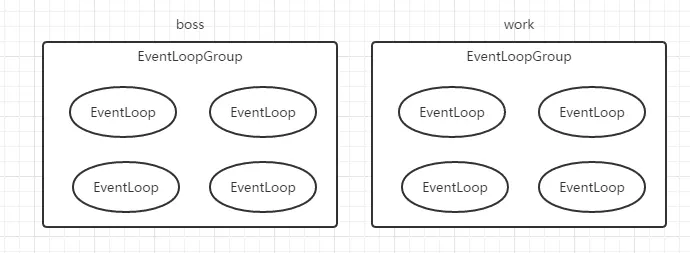
NioEventLoopGroup构造方法:
/** * Create a new instance using the default number of threads, the default {@link ThreadFactory} and * the {@link SelectorProvider} which is returned by {@link SelectorProvider#provider()}. */ public NioEventLoopGroup() { this(0); } /** * Create a new instance using the specified number of threads, {@link ThreadFactory} and the * {@link SelectorProvider} which is returned by {@link SelectorProvider#provider()}. */ public NioEventLoopGroup(int nThreads) { this(nThreads, (Executor) null); } /** * Create a new instance using the specified number of threads, the given {@link ThreadFactory} and the * {@link SelectorProvider} which is returned by {@link SelectorProvider#provider()}. */ public NioEventLoopGroup(int nThreads, ThreadFactory threadFactory) { this(nThreads, threadFactory, SelectorProvider.provider()); } public NioEventLoopGroup(int nThreads, Executor executor) { this(nThreads, executor, SelectorProvider.provider()); } /** * Create a new instance using the specified number of threads, the given {@link ThreadFactory} and the given * {@link SelectorProvider}. */ public NioEventLoopGroup( int nThreads, ThreadFactory threadFactory, final SelectorProvider selectorProvider) { this(nThreads, threadFactory, selectorProvider, DefaultSelectStrategyFactory.INSTANCE); } public NioEventLoopGroup(int nThreads, ThreadFactory threadFactory, final SelectorProvider selectorProvider, final SelectStrategyFactory selectStrategyFactory) { super(nThreads, threadFactory, selectorProvider, selectStrategyFactory, RejectedExecutionHandlers.reject()); }
MultithreadEventLoopGroup是NioEventLoopGroup的父类,构造方法:
protected MultithreadEventLoopGroup(int nThreads, ThreadFactory threadFactory, Object... args) { super(nThreads == 0? DEFAULT_EVENT_LOOP_THREADS : nThreads, threadFactory, args); }
其中 DEFAULT_EVENT_LOOP_THREADS 为处理器数量的两倍。
MultithreadEventExecutorGroup是核心,管理eventLoop的生命周期,先看看其中几个变量。
1、children:EventExecutor数组,保存eventLoop。
2、chooser:从children中选取一个eventLoop的策略。
EventLoop
每个eventLoop会维护一个selector和taskQueue,负责处理客户端请求和内部任务,如ServerSocketChannel注册和ServerSocket绑定等。
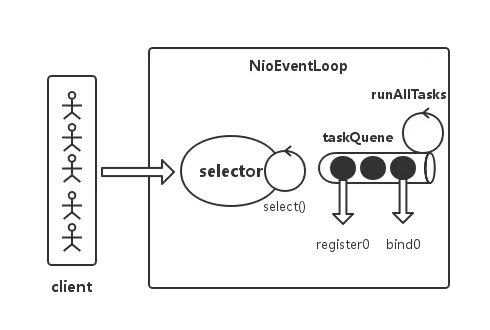
Netty 基于事件驱动模型,使用不同的事件来通知状态的改变或者操作状态的改变。定义了在整个连接的生命周期里,当有事件发生的时候处理的核心抽象。
Channel 为Netty 网络操作抽象类,EventLoop 主要是为Channel 处理 I/O 操作,两者配合参与 I/O 操作。
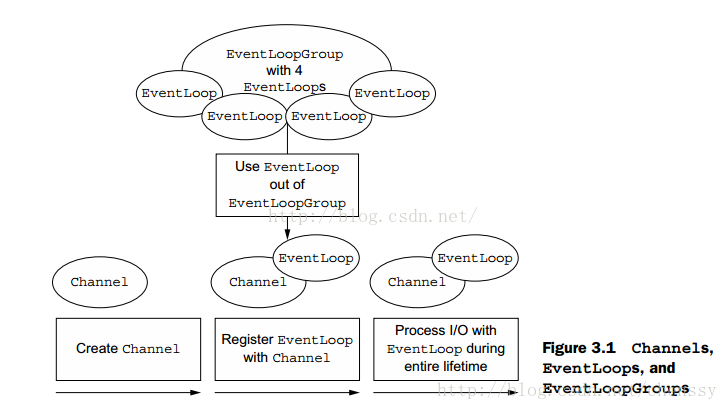
- 一个 EventLoopGroup 包含一个或多个 EventLoop。
- 一个 EventLoop 在它的生命周期内只能与一个Thread绑定。
- 所有有 EnventLoop 处理的 I/O 事件都将在它专有的 Thread 上被处理。
- 一个 Channel 在它的生命周期内只能注册与一个 EventLoop。
- 一个 EventLoop 可被分配至一个或多个 Channel 。
当一个连接到达时,Netty 就会注册一个 Channel,然后从 EventLoopGroup 中分配一个 EventLoop 绑定到这个Channel上,在该Channel的整个生命周期中都是有这个绑定的 EventLoop 来服务的。
参考:






 浙公网安备 33010602011771号
浙公网安备 33010602011771号